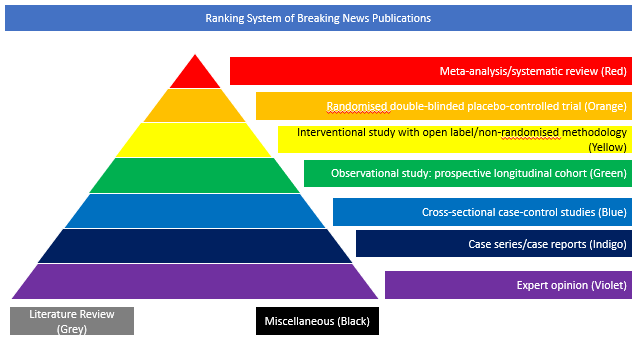Meta-analysis Systematic Review (Red)
Emerging data indicates an increased risk for cerebrovascular events with SARS-CoV-2 and highlights the potential impact of COVID-19 on the management and outcomes of acute stroke. In this paper, the authors conducted a systematic review and meta-analysis to evaluate the aforementioned considerations. A meta-analysis of observational cohort studies reporting on the occurrence and/or outcomes of patients with cerebrovascular events in association with their SARS-CoV-2 infection status was performed. The authors used a random-effects model. Summary estimates were reported as odds ratios (ORs) and corresponding 95% confidence intervals (95%CI). 18 cohort studies including 67,845 patients were identified. Among patients with SARS-CoV-2, 1.3% (95%CI: 0.9-1.6%; I2 =87%) were hospitalised for cerebrovascular events, 1.1% (95%CI:0.8-1.3%;I2 =85%) for ischaemic stroke, and 0.2% (95%CI:0.1-0.3%; I2 =64%) for haemorrhagic stroke.
Compared to non-infected contemporary or historical controls, patients with SARS-CoV-2 infection had increased odds of ischaemic stroke (OR=3.58, 95%CI: 1.43-8.92; I2 =43%) and cryptogenic stroke (OR=3.98, 95%CI:1.62-9.77; I2 =0%). Diabetes mellitus was found to be more prevalent among SARS-CoV-2 stroke patients compared to non-infected contemporary or historical controls (OR=1.39, 95%CI: 1.04-1.86; I2 =0%). SARS-CoV-2 infection status was not associated with the likelihood of receiving intravenous thrombolysis (OR=1.42, 95%CI: 0.65-3.10; I2 =0%) or endovascular thrombectomy (OR=0.78, 95%CI: 0.35-1.74; I2 =0%) among hospitalised ischaemic stroke patients during the COVID-19 pandemic. Odds for in-hospital mortality were higher among SARS-CoV-2stroke patients compared to non-infected contemporary or historical stroke patients (OR=5.60, 95%CI: 3.19-9.80; I2 =45%). The authors concluded that SARS-CoV-2 appears to be associated with an increased risk of ischaemic stroke, and potentially cryptogenic stroke in particular. It may also be related to an increased mortality risk.
DOI: 10.1002/ana.25967














